Even if your western horse came equipped with power steering, you can still run into problems if you’re not correctly asking him to neck rein. Little details in how you hold the reins or position your hand will influence how well your horse responds to your cues. Professional trainer Debbie Donnelly, whose horses and clients compete annually at the Paint and Pinto World Shows, helped demonstrate some practical tips for neck reining.
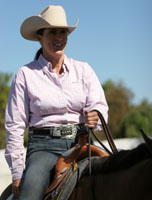 One of the most common mistakes, Debbie offers, is holding the reins together in a fist. That is only correct when using romal reins, a different style of rein constructed of one continuous loop with a connecting quirt and popper. One of the most common mistakes, Debbie offers, is holding the reins together in a fist. That is only correct when using romal reins, a different style of rein constructed of one continuous loop with a connecting quirt and popper. |
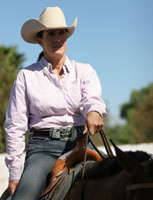 Another rider error is a “puppy dog hand.” In that instance, the rider holds her rein hand nearly horizontally, with a weak wrist. This method is not only a less effective way of communicating with the horse, but it also exerts uneven pressure on the reins. In response, the horse carries his head crooked and usually drifts or wanders rather than working on a straight line. Another rider error is a “puppy dog hand.” In that instance, the rider holds her rein hand nearly horizontally, with a weak wrist. This method is not only a less effective way of communicating with the horse, but it also exerts uneven pressure on the reins. In response, the horse carries his head crooked and usually drifts or wanders rather than working on a straight line. |
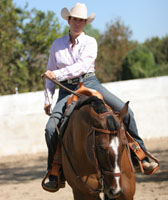 Incorrectly held reins often lead to incorrect efforts to neck rein a horse. “I see novices or uneducated riders trying to neck rein a horse by pulling the reins up and back and then off to one side. Because the horse is confused, he doesn’t respond,” Debbie says. “He’ll just flip his head up and open his mouth or pull against the rider’s hand. So then the rider pulls harder, until their hand is almost back by their waist or shoulder. It’s like they’re trying to drag their horse in the direction they want to go.” Incorrectly held reins often lead to incorrect efforts to neck rein a horse. “I see novices or uneducated riders trying to neck rein a horse by pulling the reins up and back and then off to one side. Because the horse is confused, he doesn’t respond,” Debbie says. “He’ll just flip his head up and open his mouth or pull against the rider’s hand. So then the rider pulls harder, until their hand is almost back by their waist or shoulder. It’s like they’re trying to drag their horse in the direction they want to go.”Instead, a properly trained horse should willingly neck rein with subtle cues. To demonstrate a turn to the right, Debbie barely picked up some contact with her reins. Then she shifted her rein hand just enough to the right so that the left rein pressed against her horse’s neck. That signaled her horse to tip his nose and bend his neck to the right. Then, by adding some pressure with her left leg, she pushed his body to the right. That was all it took. By being aware of these handy neck reining tips, you can be steering your horse to success, too. |
Further Reading
Neck Reining
Neck Reining Made Simple

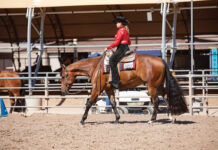
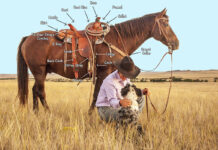
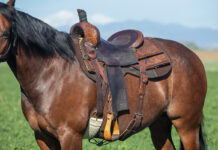


Thanks for the warning I will be careful not to do those things I held my reins wrong for the longest time until my trainer corrected me